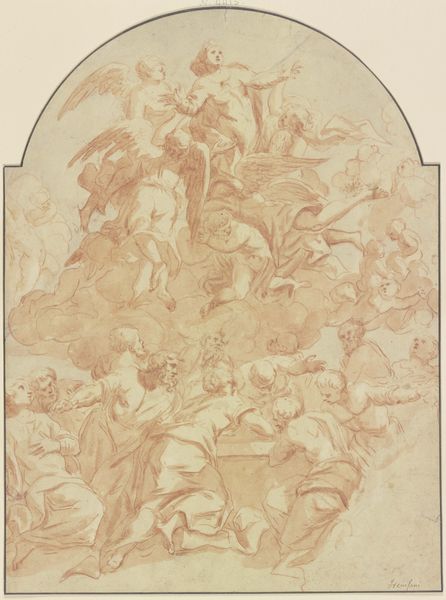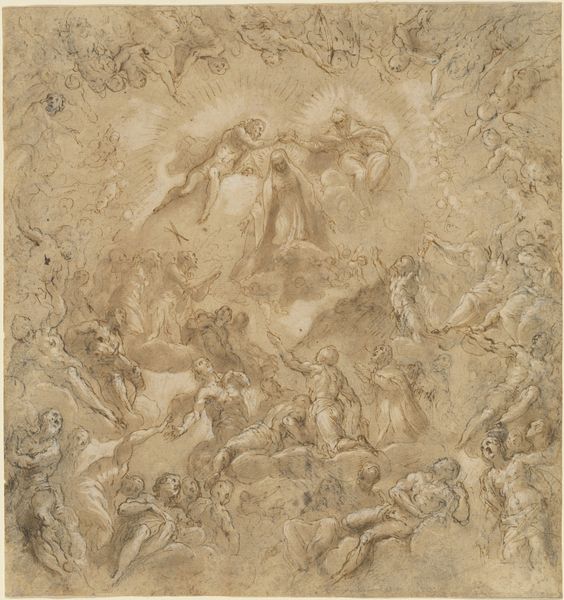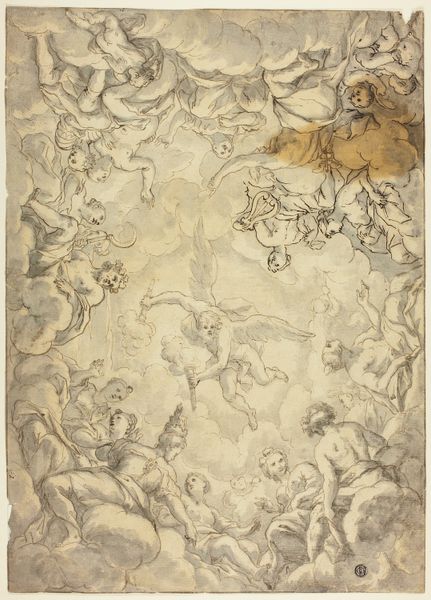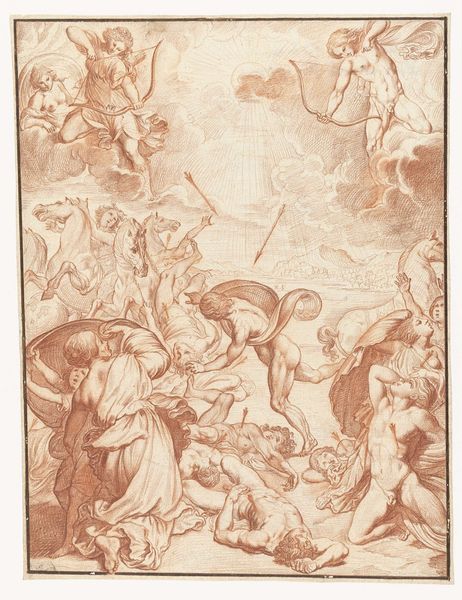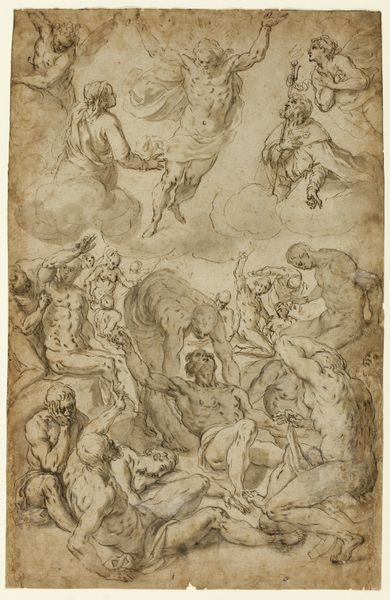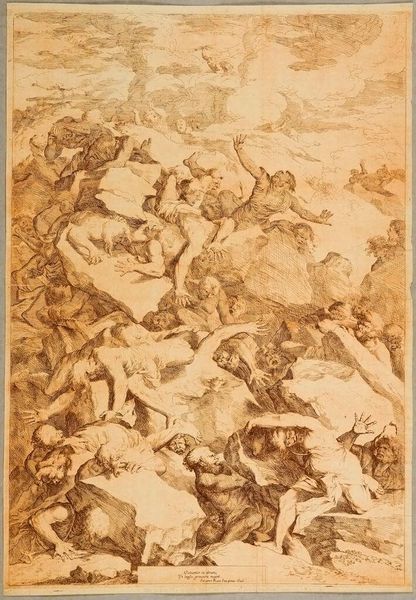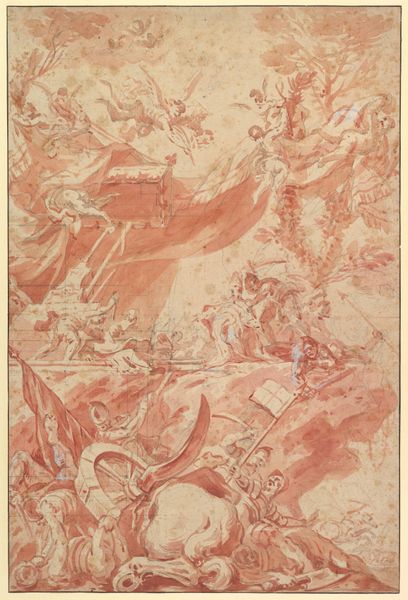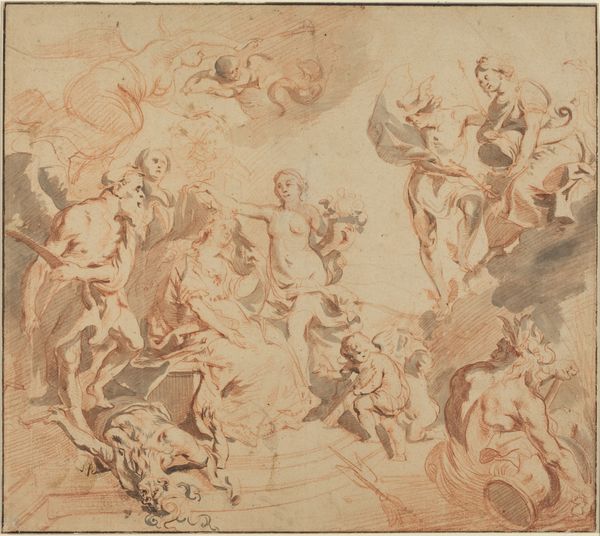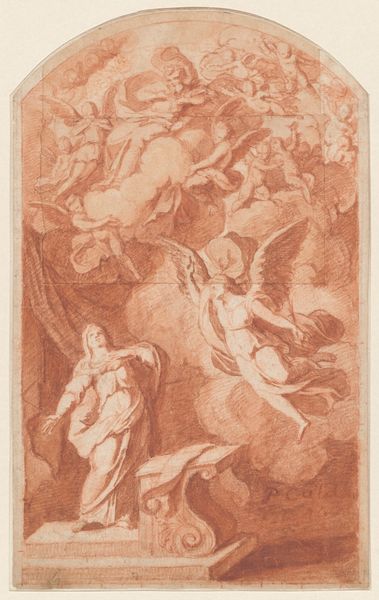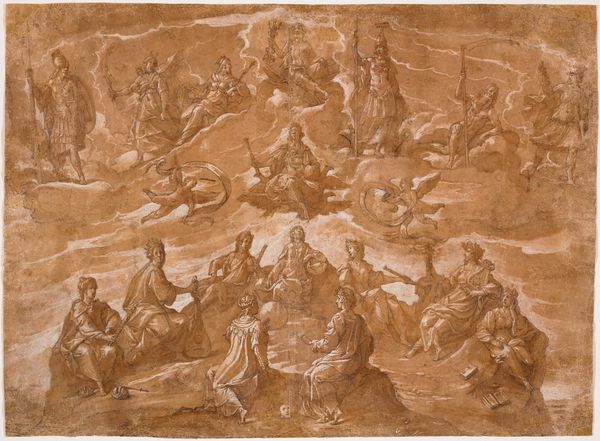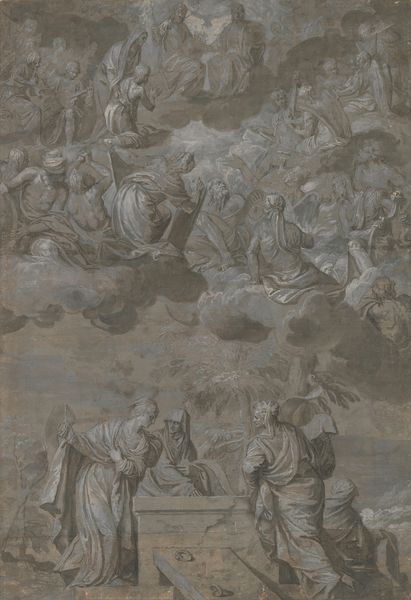
An Allegory Comparing Music and Poetry 1740
0:00
0:00
drawing, print, paper, ink
#
drawing
#
allegory
#
baroque
#
ink painting
# print
#
figuration
#
paper
#
female-nude
#
ink
#
history-painting
#
nude
#
male-nude
Dimensions: sheet: 21 7/16 x 15 13/16 in. (54.5 x 40.2 cm)
Copyright: Public Domain
Editor: This is Michel François Dandré-Bardon’s "An Allegory Comparing Music and Poetry," created in 1740, using ink on paper. There's this swirling mass of figures, all rendered in reddish-brown ink, creating a rather dreamlike, ethereal composition. What compositional elements stand out to you? Curator: Immediately, the lack of stark value contrast is apparent; it softens forms within a unified visual plane. Dandré-Bardon utilized tonal gradations achieved through varied ink washes to sculpt forms. Note the deployment of linear perspective as a symbolic scaffolding in the background that recedes but ultimately lacks three-dimensional grounding. How does this absence affect the work? Editor: It makes it feel less about realism and more about...ideas. It's not a scene to be believed, but a concept illustrated, perhaps? It directs my reading toward interpreting symbolism in this context rather than a conventional representation. I suppose you might consider that intentional? Curator: Indeed. Observe how the dynamism in the line work suggests movement and energy. Consider the implications of semiotics within this space. Each symbol or form creates a network of meaning relative to the other through its spatial positioning. Note the organization; from chaos below, where an agitated and enthroned beast is pictured, forms arise that create, eventually reaching, equilibrium with an ascending Pegasus, suggesting a structured progression toward... Editor: ...harmony, perhaps? The symbolism then reinforces that reading: The beast chained becomes humanity refined by art? Curator: It's plausible, given the classical artistic lexicon employed, but we must always return to the formal elements—the relationships between line, tone, and the artist’s strategic utilization of space. That’s where our analyses and understandings become visible. Editor: That clarifies things. The linear development guides the viewer's journey. Curator: Precisely! It enables us to discuss the relationships and inner construction that shapes any work. We can consider any historical intention separately, but we read visual organization itself most immediately.
Comments
No comments
Be the first to comment and join the conversation on the ultimate creative platform.
